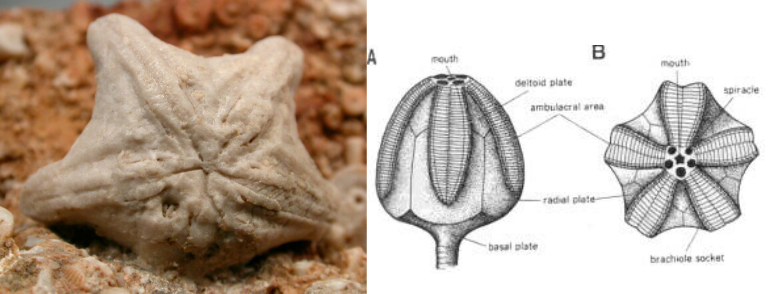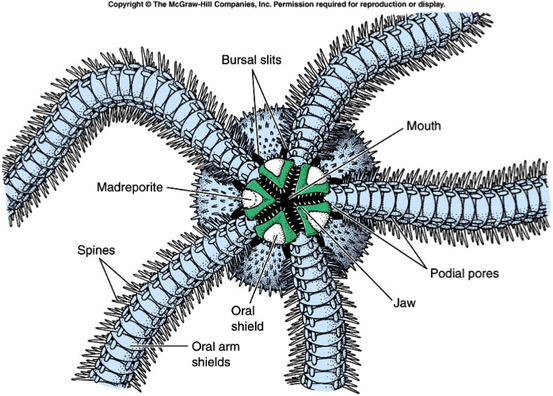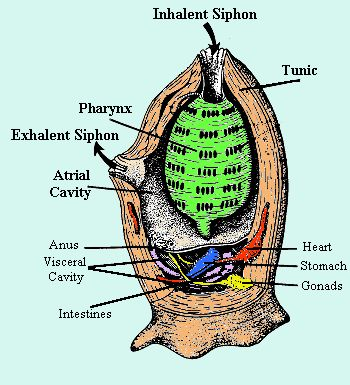Labs 8+9
1/17
Earn XP
Description and Tags
Nov 5-6
Name | Mastery | Learn | Test | Matching | Spaced |
|---|
No study sessions yet.
18 Terms
Fossil echinoderm
Class Blastoida
-mouth on center of ridged end

Pateria aboral surface
madreporite, papulae (finger shaped, function as gills), spines
Oral surface of a starfish
Includes ambulacral grooves
Internal anatomy of starfish
Pyloric stomach, cardiac stomach, pyloric caeca, gonads, ampullae of tube feet, stone canal, ring canal, radial canal

How would a sea cucumber and pisaster respond to being attacked by a sun star?
Sea cucumber - undulative motion to “swim”
Pisaster - used pedicellaria balls to attack solaster tube feed
Response to intracoelomic injection of KCL in holothuroids?
Evisceration
Brittlestar external anatomy
Spines, central disk, segments (composed of calcareous ossicles)
bursal slits, genital plate, arm shields, mouth

Unique eye cups in sea stars
-Ommatidia
-hundreds per eye
How do sand dollars feed?
Food looks like it is transported into ambulacral grooves, moved by both spines and tube feet towards mouth
Chordate Taxonomy
Subphylum Urochordata
Class Asciadicea
Class Larvacea
Class Thaliacea
Subphylum Cephalochordata
Urochordata general characteristics
marine filter feeders, have a tough covering called the tunic, a thin tissue layer made of water spicules, and polysaccarides that surrounds the body
Urochordate classes
Ascidiacea (all the ones we saw) - sessile, well-developed tunic, pharyngael gill slits, lack dorsal hollow nerve cord and notochord. (althou tadpole-like larvae have them). Can be solitary or colonial. Blood and tissues store high levels of heavy metals nd ammonium.
Larcacea - pelagic and tadpole-like, encase body in gelatinous house that filters food particles out of water and directs currents to help move.
Thaliacea - pelagic filter-feeders that resemble adult ascidiaceans. Includes salps. Move via jet propulation by cilia or muscles

Cephalochordata general characteristics
lancelets. Small fish-like animals, live partly buried in sand. Have well-developed axial musculature that they use for swimming
What connects colonial sea squirts?
Stolon
Sea squirt circulatory system
-have a heart that pumps blood
-flow reverses every few seconds/minutes
Water flow in sea squirts
-from incurrent to excurrent siphons
-digestive material can indicate anus which is next to excurrent siphon
Tunicate internal anatomy
-sensory tentacles, pharyngael basket with stigmata (slits), tunic, mantle, atrium, heart, stomach, endostyle

Cephalochordate anatomy
Oral cirri, notochord, gill slits of pharynx, hollow nerve cord, muscle myomeres